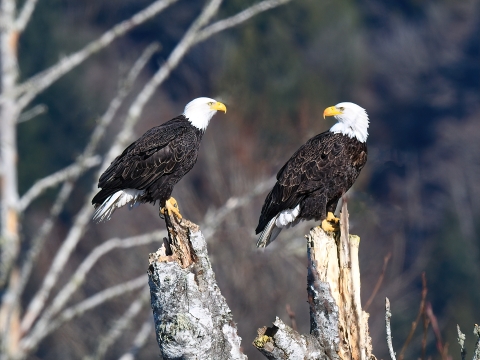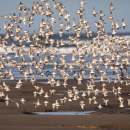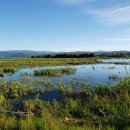About Us
Lewis and Clark National Wildlife Refuge encompasses approximately 20 islands and stretches over 27 miles of the Columbia River, from the mouth of the river upstream to Skamakowa, WA. Although rarely visited by humans, this refuge is a haven for migratory waterfowl, songbirds, raptors, amphibians and fish.
Our Mission
The mission of the National Wildlife Refuge System is to administer a national network of lands and waters for the conservation, management and, where appropriate, restoration of the fish, wildlife and plant resources and their habitats within the United States for the benefit of present and future generations of Americans.
Our History
On January 5, 1971, the US Fish and Wildlife Service identified 33,000 acres for what was called at the time the Columbia River Islands Refuge. This acreage was identified as important habitat “To preserve an important wintering and feeding area for migratory waterfowl in the Pacific Flyway”, including 3,000 whistling swans, 2,000 dusky Canada geese, and 50,000 ducks. It also specifically mentioned the protection of “other water and shore birds, band-tailed pigeons, bald eagles, Columbian white-tailed deer, and various kinds of small fur-bearing animals.” The importance of this rich estuarine habitat was recognized as “irreplaceable” not only for its importance to waterfowl, but also as a transition area for migrating and juvenile salmon. On April 19, 1972, the Service established Lewis and Clark National Wildlife Refuge.
In later years the refuge acquired new areas, including the Tongue Point Naval Station, the Brownsmead Unit, and Emerald Heights, specifically to protect critical bald eagle nesting habitat. On May 20, 2004, Clatsop County donated 4,535 more acres to the refuge.
Other Facilities in this Complex
Lewis and Clark National Wildlife Refuge is managed as part of the Willapa National Wildlife Refuge Complex. A National Wildlife Refuge Complex is an administrative grouping of two or more refuges, wildlife management areas or other refuge conservation areas that are primarily managed from a central office location. Refuges are grouped into a complex structure structure
Something temporarily or permanently constructed, built, or placed; and constructed of natural or manufactured parts including, but not limited to, a building, shed, cabin, porch, bridge, walkway, stair steps, sign, landing, platform, dock, rack, fence, telecommunication device, antennae, fish cleaning table, satellite dish/mount, or well head.
Learn more about structure because they occur in a similar ecological region, such as a watershed or specific habitat type, and have a related purpose and management needs. Typically, a project leader or complex manager oversees the general management of all refuges within the complex and refuge managers are responsible for operations at specific refuges. Supporting staff, composed of administrative, law enforcement, refuge manager, biological, visitor services, and maintenance professionals, are generally, but not always, centrally located and support all refuges within the complex.
Other refuges in the Willapa National Wildlife Refuge Complex include Willapa National Wildlife Refuge and the Julia Butler Hansen Refuge for the Columbian White-tailed Deer.
The Complex Headquarters Office is located at 7112 67th Place, Long Beach, WA 98631.




